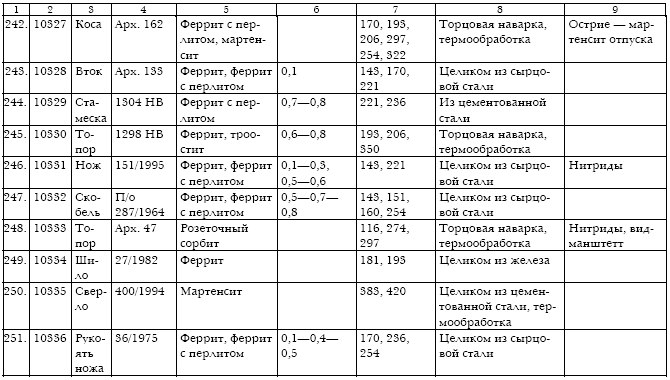production of
It must be also noted that the tradition of producing objects with welded-on cutting edges survived. In Pskov such artefacts make up around 35 % of the total. The picture observed in the Byelorussian urban centres looks similar (Gurin 2000: 153). Evidently, in the 16th— 17thcc. this group of production was considered expensive, and, possibly, was made to order. It should be pointed out that some objects with welded-on working edges were produced until the mid 19thc. (Завьялов 1990: 154, 1998: 49).
The technical and technological foundations of the ironworking formed by the blacksmith’s craft of Medieval Rus’ in the pre-Mongol time had not lost its significance despite the long period of destruction in the country’s history: its potential functioned until the epoch of Peter the Great, when both production of ferrous metals and ironworking reached the industrial level. As soon as favourable conditions for industrial development had been created, Russia was able to realise its technological potential evidenced by the breakthrough in development of iron metallurgy.
(
Список сокращений
АИППЗ — Археология и история Пскова и Псковской земли
КСИА — Краткие сообщения Института археологии
МИА — Материалы и исследования по археологии СССР
ПСРЛ — Полное собрание русских летописей
РА — Российская археология
СА — Советская археология
САИ — Свод археологических источников
Приложение. Металлографические характеристики исследованных изделий






















































